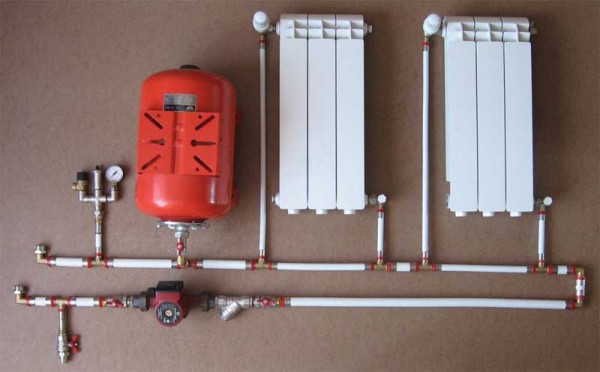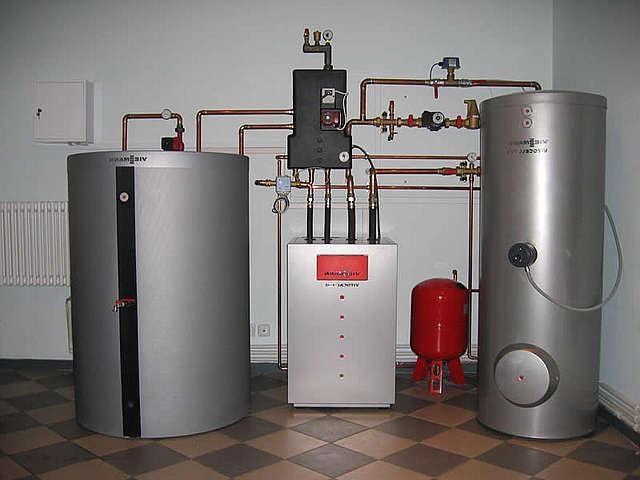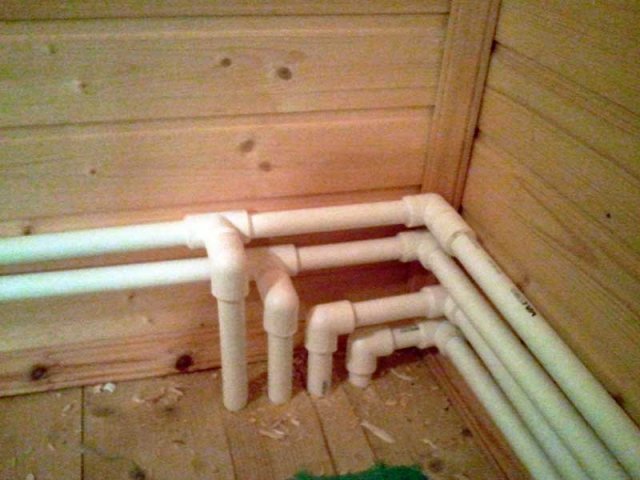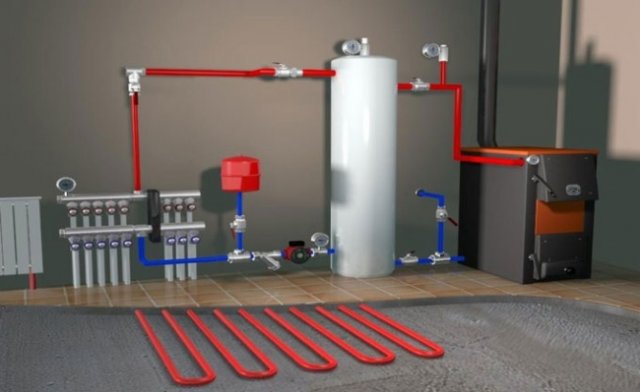The heating system of a private house has a valuable advantage - it is independence from public utilities. When building a house, you can choose your own heating device for living in a comfortable environment. Moreover, such systems are often assembled with their own hands. This process should take place in stages:
1. The choice of the heating system is made.
2. The necessary elements are selected.
3. Calculations are performed.
4. A heating scheme and project is being developed.
5. Documentation is drawn up.
6. Installation work is in progress.
7. Test run in progress.
The most popular way to heat a home is a hot water heating system.
Steam heating is prohibited for use in residential buildings. It is mainly used for huge storage rooms. Electric heating is also used.
Private house heating system
What type of fuel should you choose?
When choosing a fuel, traditional options are considered.1. Gas is a popular fuel and affordable. With a qualitative approach, all heating processes are automated.
2. It is possible to use solid fuel in the absence of a gas pipeline. The choice is made between pellets, coal and wood. The disadvantages of this type of fuel include the inability to automate the system.
3. The use of electricity is convenient and simple. The lack of fuel is considered to be high cost.
4. Liquid fuel is used. It can be fuel oil or diesel fuel. This method is characterized by economy and high efficiency.
The choice is influenced by the calculation of costs for the further operation of the heating system, as well as the proximity of the required raw materials.
![]()
Solid fuels
Device and features of water heating
When installing a heating system in a house, special attention should be paid to the device and characteristics of water heating.Coolant flow diagram
Depending on the type of movement of the coolant, gravitational and circulation systems are distinguished:1. In a gravitational system, the liquid moves up and through the pipes when the boiler heats up, and when it cools, it returns back. This system is characterized by non-volatility. There are disadvantages with this method of the device:
it is impossible to perform precise adjustment of heat transfer by instruments;
pipes are selected with a large diameter and mounted with a slope to the side;
the expansion tank must be open.
2. The movement of liquid in the circulation system is carried out by a pump. The undoubted advantages are the ability to control heat transfer and the use of small diameter pipes.

natural circulation pattern
Which heating system to choose?
When installing a heating system, it is important to correctly isolate the pipes. There are the following schemes for heating a private house:1. A single-pipe system is a certain line to which batteries are connected in series. This is a good way to heat a one-story house. It should be borne in mind that the coolant enters the last battery cooled.
2. The two-pipe scheme is distinguished by its efficiency. In this case, the movement of the coolant is carried out along two lines. This affects the increase in pipe consumption, but an optimization of the heating system is created. The system is used both for space heating and for heating tap water.
3. The collector system is equipped with a central riser to which collectors are connected on all floors. In this case, the collector distributes the existing coolant to the individual batteries. The system is being tuned with high precision. The disadvantages include high pipe consumption.

Two-pipe system in a private house
Electric heating
The electric heating system is also safe. It is possible to control the temperature regime in each room.This method is used when it is not possible to connect to the gas pipeline.
For heating, a special boiler, electric convectors, film heating circuits or special thermal panels are used.
What elements are needed for installation?
Before installation work, the components of the heating circuit are purchased.
Boiler
The boiler determines the functioning of the entire system. This unit creates the necessary heat and gives it to the coolant, which moves it to the batteries.
Any heating devices are equipped with two chambers. Fuel burns in the first chamber. This is a combustion chamber. And from another chamber (heat exchanger) the coolant comes out.
Also, devices are:
single-circuit;
double-circuit.
The latter are still a device for heating water.
Depending on the fuel used, heating units are divided into the following types:
1. Electric models are used in areas where there is no gas. Depend on power outages and are expensive.
2. The most demanded is the gas boiler. Differs in economy and ease of use.
3. Units on liquid fuel are not often used. They need a separate room, as they emit a smell when burned.
4. Solid fuel models are popular in areas where there is no gas pipeline. Requires a systematic loading of fuel.
Advice! It is recommended to use boilers with two heating options. For example, a gas unit or an electric one with a solid fuel burner. This will help in case of power outages or gas problems.

Types of boilers for a private house
Pipes
When choosing pipes, the following options are considered:
1. Steel is practically not used. They are characterized by a short service life and complexity of installation.
2. Reinforced-plastic structures are easy to install, but they require careful selection of suitable components.
3. Polypropylene pipes are assembled with a soldering iron and therefore provide a good seal.
4. The disadvantage of copper products is their high cost. Otherwise, this is the best option, which is characterized by durability, reliability and hygiene.
Advice! In a private house, it is better to use polypropylene or copper structures.

Wiring from polypropylene pipes
Radiators
Radiators are selected from the following types:
1. Closed systems use steel structures. Steel oxidizes in air.
2. In a private house, aluminum radiators are often used. They are characterized by high-quality heat dissipation and fast heating, but are not adapted for heavy loads.
3. Bimetallic consists of two metals. The coolant moves along the steel pipe, and the aluminum fins provide good heat transfer.
4. Models made of cast iron are considered reliable and durable.
Important! It is necessary to count the sections for the heating system. 1 square meter requires 100 watts of power. The area of the room is multiplied by 100. Then the figure is divided by the heat transfer value of one section, which is indicated in the passport. Thus, the number of sections per room is revealed.

DIY radiator installation
Heating installation
Before installation, auxiliary parts are purchased: gaskets, nipples or brackets. During installation, the elements are strapped.Installation consists of the following steps:
1. A wiring diagram is selected.
in the upper wiring, the expansion tank is mounted at the highest point of the room;
when using bottom piping, hot water pipes are installed at the bottom of the building. In this case, the return line that returns the energy carrier to the boiler is mounted below the hot pipe.
2. A detailed plan of the location of all elements is drawn up.
3. Installation starts from the boiler. Units operating on liquid and solid fuels are installed in a utility room on a concrete base.
4. The pump is mounted in the line, along which the coolant moves from the radiators to the boiler.
5. Piping in progress. Polypropylene pipes are mounted with a soldering device. Steel structures are installed by welding. Reinforced plastic are fastened with fittings.
6. When installing radiators, the ribs of the structure are located at the same level and without vertical deviations.
When mounting the system, certain rules should be taken into account:
1. Radiators are located under the window openings.
2. The distance from the bottom of the battery to the floor covering should be about 100 mm, and from the window sill to the battery at least 60 mm.
3. All sections around the perimeter of the house are at the same height.
4. The system must have a drain.
After installation work, the system is filled with coolant and a test run is carried out. All connection areas and joints are inspected.

Heating system installation



